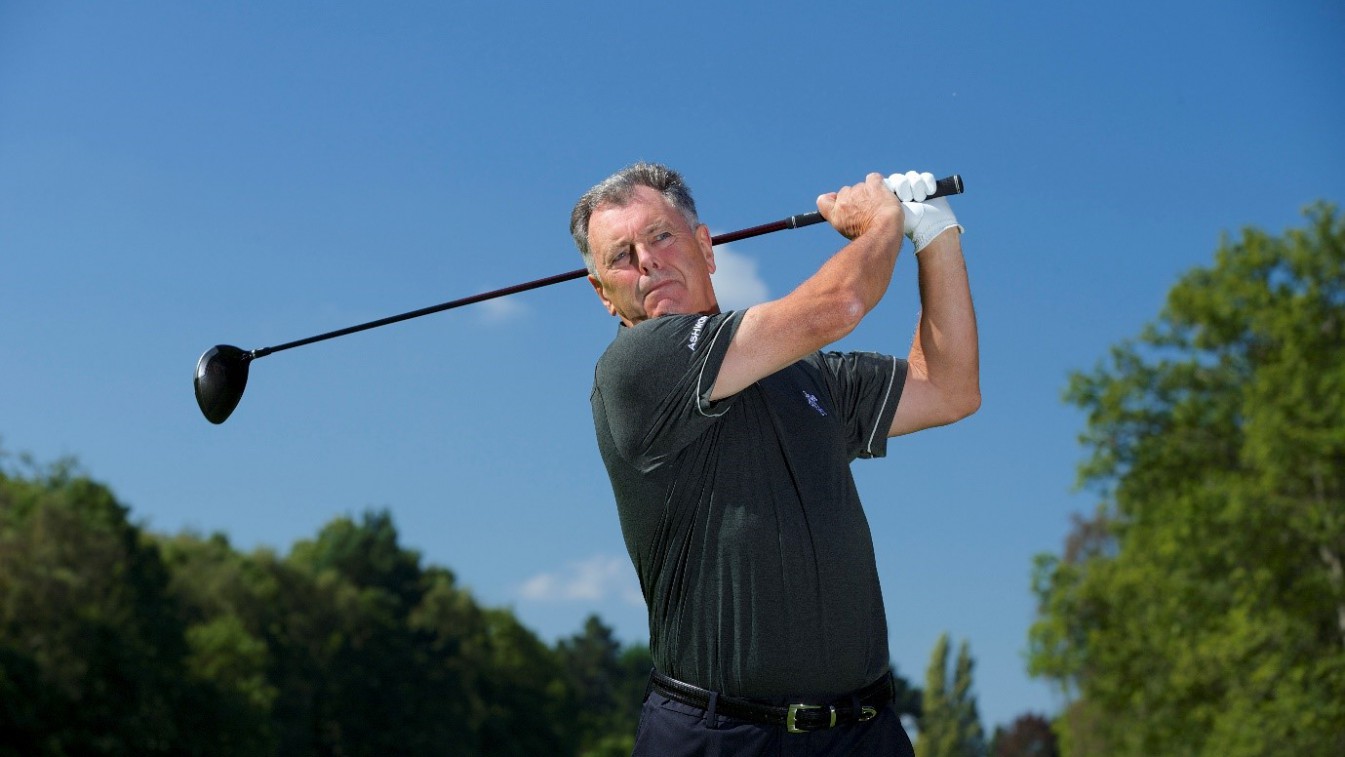
The distance, speed and accuracy of your swing can be the crucial difference between success and failure. We spoke to Golf Care ambassador and former Ryder Cup captain Bernard Gallacher to get his top tips on building a golf swing…
Wrist and forearm positioning
This is particularly important when building a golf swing. I’ve always felt that you should take a full swing, until you feel your wrists cocked and underneath the shaft, with your clubhead pointing towards the target. However, there’s not necessarily a right or wrong way.
Sergio Garcia’s wrists are not under the shaft at the top because he’s got a flat swing, whereas John Daly’s swing is overactive at the top. The perfect swing in my opinion is somewhere between these two, like Nick Faldo’s swing for instance.
The ideal takeaway
You should make the club an extension of your left arm (the right, if you’re a left handed golfer) and tilt your shoulders on the takeaway. Everyone should feel like it’s ‘one-piece takeaway’, which is where your left arm and club are in unison. If your takeaway doesn’t break this sequence, you should feel your shoulders start to turn and tilt.
The arms should hang naturally from the address – not away from, or too close to the body. This depends on the loft of your club. But if you put the sole of your club on the ground, your arms will hang naturally. The new way of fitting people for golf clubs allows you to do that.
Nick Faldo has what I would consider the ideal takeaway. He developed this with the help of David Leadbetter and I think he’s a good model for other golfers.
Backswing and downswing
Apart from swinging up with your arms and feeling the club is on target, you’ve got to feel as if your shoulders turn and you’ve cleared your right (or left) side. When you get to the top of the backswing, your arms should be higher than your shoulder with your wrist underneath the shaft.
The downswing should start with your hips shifting laterally forward, bringing the arms and clubs down towards hip level. You should quickly try and turn your hips out of the way.
Elbow positioning
I always preferred to keep my elbows tucked in and had a flat swing because of my height. You usually find that the taller the golfer, the more of an upright swing they have. For example, Colin Montgomerie has a very upright swing whereas Ian Woosnam has a very rounded swing.
It really depends on your physique, but generally speaking you should keep your elbows tucked in and start further away from the ball so that your swing is more rounded.
The distance between your feet
That depends on your gait – if you don’t have a very big gait, you shouldn’t have a very wide stance. The distance between your feet should ideally be the width of your shoulders to give you optimum balance. Golfers shouldn’t worry too much about their gait or overthink it – just stand the way you walk.
Rory McIlroy has a big gait, so has a wide and athletic stance and looks very strong over the ball – that’s the way he walks. A wide stance means you use your leg action a lot more and really drive the swing.
If you’ve got a wide stance you might want to think about going narrower as you get older and using your shoulders and arms more, as you won’t have the agility or flexibility to drive your legs as you do when you’re young.
Ideal posture
Posture is one of the four fundamentals of the golf swing, along with the address, stance and posture. If you get it right, you can’t go far wrong.
Posture is quite difficult to perfect, but I’ve always felt that you should stand as tall as you can to the ball then flex your knees – a little bit like Henrik Stenson. When I was teaching people to play golf, I would always advise that they adopt this stance.
Standing tall makes it easy to turn through the shots and easy to turn in the backswing – it suits a lot of golfers.
Jason Day and Rory McIlroy have very athletic postures because they work out a lot and this helps them really stand over the ball, but this type of posture might not be for everyone.
How to avoid the dreaded ‘early release’
This the most common mistake people make when building a golf swing, whether you’re a professional or amateur. The early release happens when your shoulder comes across the shot from the top and your swing starts with the upper body rather than the lower body. The left side of the golf swing stops rotating with the shot and doesn’t stay on the move, so the upper body takes over.
To avoid this, you should have a little bit of lateral movement from the top of the swing and then clear your hips as you hit the ball. Some people get rid of the early release by slowing down their swing to give the bottom side of their swing more time to lead the downswing.
Adapting your swing over time
As you get older, you’re not going to be as agile, so you need to do more warm up exercises and hit some balls before you play. Resist the temptation to go straight onto the first tee and find either a practice net or driving range where you can practice.
Do what the pros do – start by hitting a few 50 or 60-yard pitching wedges, then hit half a dozen balls with an 8-iron, a 6-iron and a hybrid. Finish this off with a couple of long and short putts and you should be ready. This shouldn’t take longer than 15 to 20 minutes and if you can allow that time before you play, I guarantee you will play to your handicap more often.
Specialist golf insurance through Golf Care
If you’re heading to the course to practise your swing, you might want to consider specialist golf insurance to protect both yourself and your equipment. Find out how golf insurance can help you by clicking the link above, or get an instant online quote today.
Get a quick quote for Golf Insurance
Get A Quote